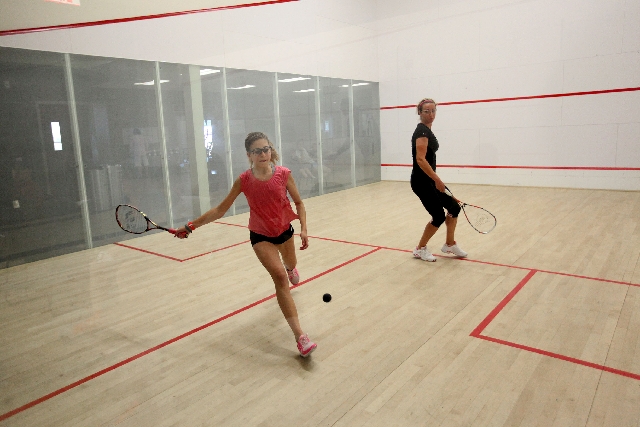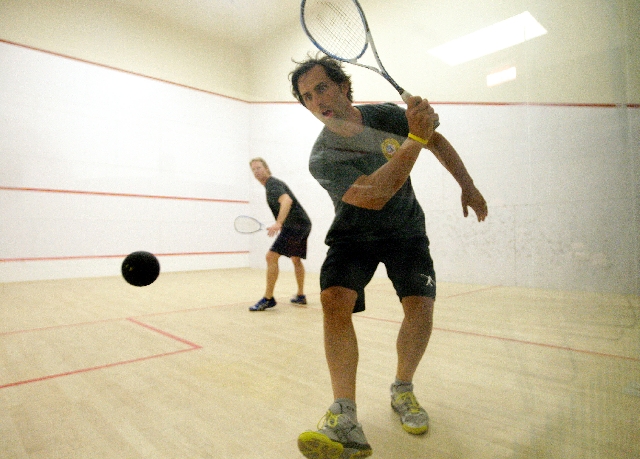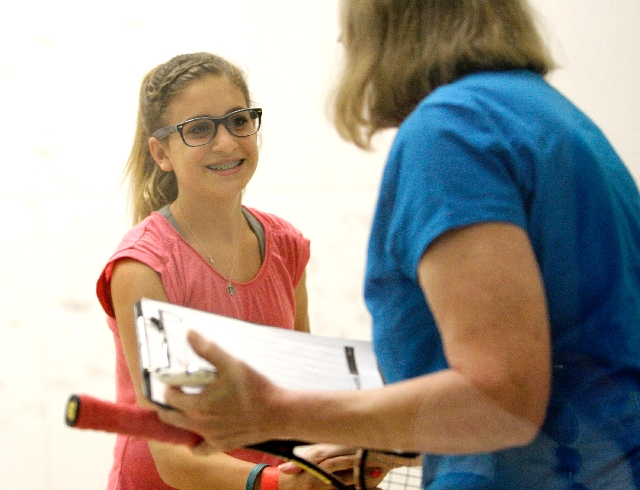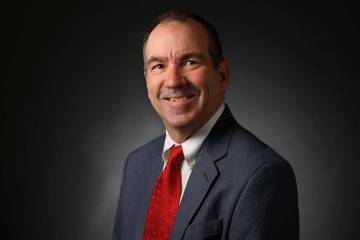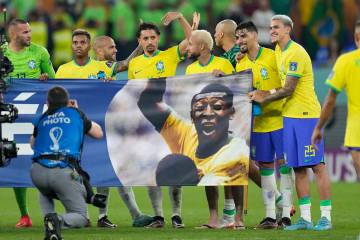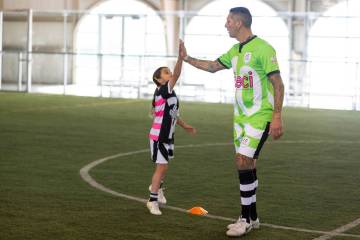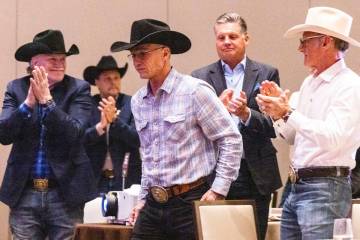Squash not a sport for couch potatoes
Before Sunday’s Life Time Grand Prix Squash Tour Vegas Open, most of what I knew about the ancient sport of squash was that it must have been named when somebody sat on it. And that one should never cancel a squash match after agreeing to one.
So said Jennifer Cavilleri (Ali MacGraw) to Oliver Barrett IV (Ryan O’Neal) in “Love Story.”
When Ollie IV told his commoner wife that he would cancel his squash match to take her out to dinner, Jenny said in no uncertain terms that Ollie should not cancel his squash match because she didn’t want a flabby husband. Then she called him “Preppie” a couple of more times and said maybe he could beat up somebody on the Yale hockey team for her.
On Sunday, I learned there was a squash court on the lower deck of the Titanic, and the White Star Line’s resident pro, a fellow named Frederick Wright, went down with the ship.
After the Titanic clouted the iceberg, Colonel Archibald Gracie, who had scheduled a squash lesson that day, supposedly bumped into Wright amid the chaos and suggested they might cancel the lesson. “Yes, we better,” was the reply, and those are believed to be the last words spoken by Frederick Wright.
I wonder if Jenny Cavilleri knew this.
Englishman Richard Glanfield, the director of squash — “works for me,” he said — at Life Time Athletic Summerlin, said when the customs agent at Los Angeles International Airport asked why he was traveling to the U.S., and he replied “squash tournament,” the agent asked “What county fair?”
So, yeah, it’s easy to make light of squash, or say you prefer it deep fried or baked. But the fact is Forbes magazine in 2003 rated the racquet sport of squash No. 1 among healthy sports to play.
It’s possible to burn 1,000 calories an hour while playing squash. According to a website called Fit Day, that is 842 more calories an hour than a man my size will burn bowling.
Glanfield said squash originated in British prisons, probably because there are walls in prison, and you need walls to play. From there it went to the British military, and from there it went to the upper crust of society and people like Oliver Barrett IV, who attended Harvard.
Nobody really knows how squash became a sport associated with the well-to-do, Glanfield said.
Glanfield, 48, a former national squash coach for Malaysia, Peru and Trinidad & Tobago, said he began playing squash because there was a club next door to where he grew up in Shropshire. “I wish it had been a tennis club,” he said wistfully. “I’d be a lot richer than I am now.”
England and Egypt and Pakistan are considered some of the top squash-playing nations. Julian Illingworth of Portland, Ore., who was to meet Zac Alexander of Australia in the Vegas Open men’s final, is the USA’s top-ranked pro player, No. 34 in the world. He was a four-time All-Ivy League squash player at — you might have guessed it — Yale.
I’m told more than 1.2 million people in the U.S. — mostly from Boston, I think — and around 27 million worldwide play squash, which can be called a distant cousin of racquetball but will result in a roll of eyes if you call it that around squash enthusiasts.
I have a friend who used to play squash. “It’s a brutal game,” he said. “Squash players laugh in the face of racquetball players.”
My friend said he played squash at Blackheath Rugby Club in England.
“The best part was playing a game of squash and then retiring to the bar in the club and having a couple of pints with the rugby players,” he said. “Them covered in mud and blocking out the sunlight, me in my whites and thinking they could squeeze my neck with one hand and make my head pop off.”
This is another reason not to mention racquetball where squash — and rugby — is played.
Squash is played with a longer racquet, like badminton, and a smaller ball, like golf.
The ball can be soft or hard; the ones used at the Summerlin event were soft and don’t travel nearly as far as a racquetball. But they travel just as fast. So you have to run to the ball a lot, and this is how you burn 1,000 calories in a single hour.
I must have burned around 4 calories watching the ladies final. Hannah Slattery, only 14, of Las Vegas, defeated Tina Todorov, a former world-class 100-meter high hurdler from Bulgaria, 11-3, 11-7, 11-3.
Todorov is 38 and the mother of 5-year-old twin boys and appears to have a body fat content of minus-1. Her match against the Slattery youngster lasted all of 15 minutes, but at least she burned another 250 calories and received a nice silver cup.
Jenny Cavilleri would have been impressed.
Las Vegas Review-Journal sports columnist Ron Kantowski can be reached at rkantowski@reviewjournal.com or 702-383-0352. Follow him on Twitter: @ronkantowski.



